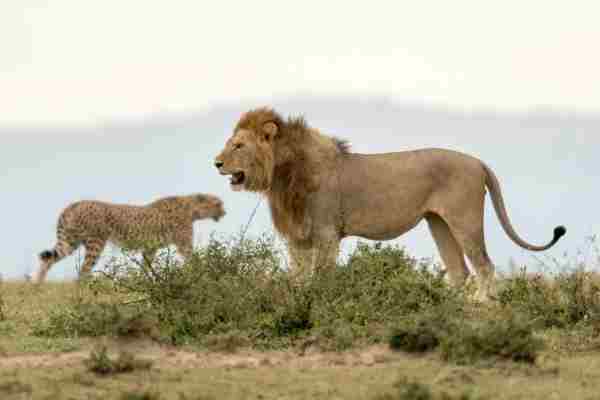In the realm of nature’s fierce struggles for survival, some battles are waged with an intensity that leads to the ultimate sacrifice – Animals that fight to the death. The animal kingdom, an arena of astonishing adaptations and survival instincts, unveils a raw and primal world where conflict can reach a fatal crescendo.
Table of Contents
This article delves into the heart of these brutal confrontations, where animals display ferocity and tenacity in a bid to ensure their lineage and secure their place in the ecosystem. From the majestic big cats of the savannah to the cunning insects in our backyard, we journey through the stories of creatures engaged in life-or-death struggles. Join us as we shed light on the gripping, albeit somber, reality of animals fighting for their very existence in the relentless battle for survival.
Overview of Animal Behavior and Conflicts in the Wild:
In the natural world, survival is a constant struggle, and conflicts are an inherent part of the battle for existence. Animal behavior is a complex interplay of instincts, survival strategies, and adaptation to the environment. Conflicts in the wild can arise from various factors, including competition for resources, territorial disputes, or the need to secure a mate and ensure the continuation of their species.
These confrontations often unveil the raw realities of the animal kingdom, displaying the lengths creatures will go to in order to survive and perpetuate their genetic lineage.
Lions (Panthera leo):

Male lions, known for their majestic manes and leadership within pride, engage in formidable and sometimes lethal battles over various aspects of their social structure. In the savannas of Africa, clashes often erupt between rival males seeking to dominate pride or defend their existing territory. These confrontations are typically triggered by territorial infringement or challenges for mating rights.
When a new coalition of males attempts to take over a pride, they may face fierce resistance from the current pride’s dominant males. The battles involve roaring, physical combat, and strategic maneuvering, with the intention of establishing dominance. While these confrontations can lead to severe injuries, and in some cases, death, they are a crucial part of lion social dynamics, ensuring the fittest and strongest males maintain control and ensure the survival of their genetic lineage.
Bulls (Bos taurus):
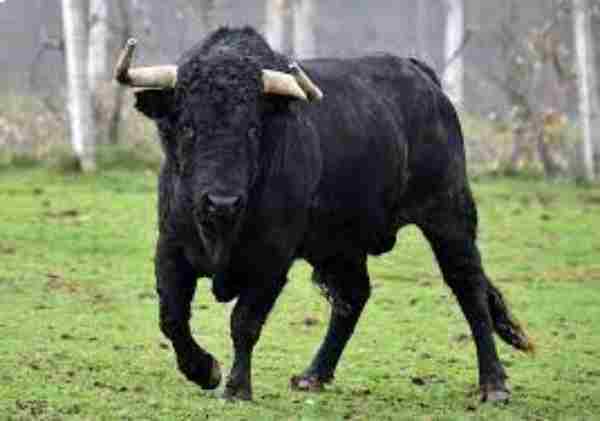
Bulls, particularly in the context of bullfighting events, are engaged in fights where the objective is often the demise of the bull. Bullfighting is a controversial cultural practice that takes place in certain regions, involving a confrontation between a bull and a matador. The bull is repeatedly provoked, causing it distress and aggression.
The matador uses various tools and maneuvers to weaken the bull, ultimately leading to its exhaustion and death. While the bullfight is intended as a display of human skill and bravery, it inevitably ends in the death of the bull, making it a fatal confrontation for the animal. This practice has faced widespread criticism due to its cruelty and ethical concerns regarding animal welfare.
Bears (Various species):
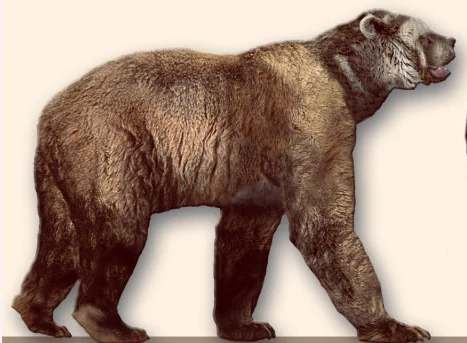
Bears, formidable creatures often associated with strength and power, can engage in lethal fights when defending territory, asserting dominance, or competing for resources. In the wild, clashes between bears typically occur during mating seasons or when establishing dominance over certain areas. During these confrontations, bears may use their size, strength, and formidable claws to intimidate and overpower their opponents.
While fatal fights are not common, injuries sustained during these battles can sometimes be severe enough to result in the death of one of the bears involved. The competition for mates or access to prime feeding grounds can intensify these encounters, leading to potentially lethal outcomes. It’s important to note that bears, like many animals, have evolved to avoid fatal fights when possible, as conserving energy and minimizing injuries is vital for their survival.
Praying Mantises (Mantodea order):

Praying mantises, known for their unique appearance and predatory behavior, exhibit a fascinating yet morbid behavior known as sexual cannibalism. During or after mating, the female mantis may attack and consume the male, often resulting in his death. This behavior, while seemingly aggressive, has evolutionary benefits.
The female gains essential nutrients from consuming the male, which can enhance the quality and size of her eggs. From an evolutionary perspective, this sacrifice by the male can increase the chances of successful reproduction. This phenomenon showcases the complex interplay between survival instincts and reproduction in the animal kingdom, even if it culminates in a fatal outcome for one of the individuals involved.
Mantis Shrimp (Stomatopoda order):
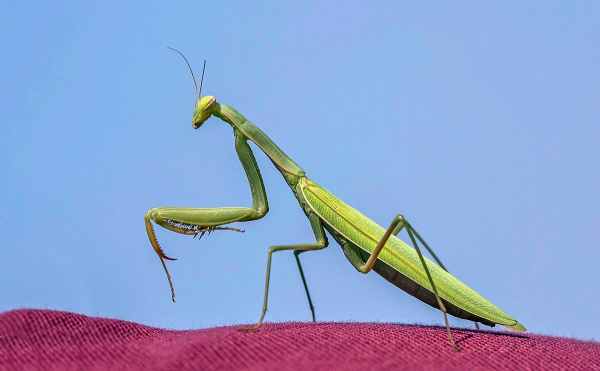
Mantis shrimps, marine crustaceans known for their vibrant colors and powerful claws, engage in intense territorial disputes that can sometimes escalate to lethal confrontations. These disputes are often over territory, burrows, or mates. Mantis shrimps have incredibly strong and quick strikes with their specialized forelimbs, capable of delivering fatal blows to rivals.
Their claws are powerful enough to break through hard shells and exoskeletons, making these confrontations exceptionally fierce. When a rival enters their territory, the resident mantis shrimp will fiercely defend it, often resulting in injuries or death for the intruder. These battles for resources and territory demonstrate the competitive nature of life underwater and the measures animals take to ensure their survival and reproduction in this dynamic ecosystem.
Primates (Various species):

Primates, including various species of monkeys, apes, and lemurs, can engage in aggressive and occasionally fatal fights, particularly during disputes over food, mates, or territory. In some cases, these confrontations can escalate to the point of severe injury or death, particularly in highly competitive or hierarchical social structures.
Dominance hierarchies within primate groups can lead to intense rivalries, where individuals vie for the top position, resulting in aggression and violence. Fatal fights are not common among primates, but the potential for lethal outcomes highlights the complex dynamics of social interactions within these intelligent and social animals.
Komodo Dragons (Varanus komodoensis):
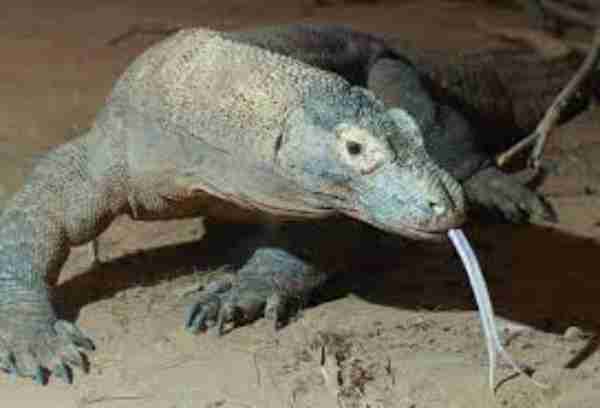
Komodo dragons, the largest lizards on Earth, inhabit the Indonesian islands and are known for their predatory behavior. These formidable reptiles can engage in aggressive and lethal battles, especially when competing for food, territory, or mates. In such confrontations, they may use their powerful jaws, sharp teeth, and strong tails to overpower rivals.
While not every encounter is lethal, injuries sustained during fights can lead to infections, which may later result in the death of one of the combatants. The territorial and competitive nature of Komodo dragons showcases the intricacies of survival and competition in the animal kingdom.
Horned Animals (e.g., Ibex, Mountain Goats):
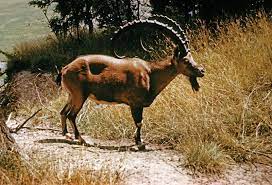
Horned animals, including species like ibexes and mountain goats, engage in intense battles during mating seasons to establish dominance and access to mates. These battles can sometimes lead to fatal outcomes. Horned animals use their robust, often curved horns as weapons in these confrontations. The clashes involve head-to-head combat, where individuals lock horns and attempt to overpower their opponent.
The victor gains higher social status and mating privileges. Fatalities are not common, but severe injuries sustained during these battles can be life-threatening, particularly if vital organs or arteries are damaged. This behavior is a testament to the competitive nature of mating within the animal kingdom and the lengths individuals are willing to go to ensure successful reproduction.
Predatory Instincts and Territoriality:
Predatory instincts drive animals to hunt for food, leading to intense battles between predators and their prey. Additionally, territoriality is a common trigger for conflicts, as animals fiercely defend their territories, crucial for access to resources like food, water, and shelter. These territorial disputes can escalate to fatal encounters, highlighting the primal urge to secure one’s space and sustenance in the wild.
Mating and Competition:
Mating season often escalates competition among animals vying for the attention and favor of potential mates. This competition may involve elaborate displays, combat, or aggressive posturing. The desire to reproduce and pass on genetic material fuels intense rivalries, showcasing the lengths creatures will go to in their quest for successful reproduction.
Survival of the Fittest:
The principle of “survival of the fittest” is profoundly evident in the animal kingdom, where natural selection favors traits and behaviors that enhance an individual’s chance of survival and reproduction. Conflicts, often brutal, serve as a mechanism for this natural selection, shaping the evolution of species over time.
Ritualized Combat and Display:
Intriguingly, many animals engage in ritualized combat or displays, where physical confrontation is avoided or minimized. These ritualized behaviors often involve elaborate postures, vocalizations, or displays of strength, allowing animals to assess each other’s capabilities and determine dominance without causing severe harm.
Fighting Strategies and Adaptations:
Animals have evolved diverse fighting strategies and physical adaptations to enhance their combat abilities. From antlers and horns for battling rivals to venomous bites and sharp talons for subduing prey or adversaries, these adaptations are honed over millennia to ensure survival and dominance.
Human Impact and Conservation:
Human activities, such as habitat destruction, climate change, and hunting, have significantly impacted animal populations and their behavioral patterns. Conservation efforts are crucial to mitigate these impacts and preserve the delicate balance of nature. Understanding animal conflicts and behavior is vital for informed conservation strategies that can safeguard both wildlife and their habitats.
Ethical Considerations:
Witnessing animals engaged in life-or-death battles raises ethical questions about the role and responsibility of humans in the wild. As we study and interact with wildlife, it becomes imperative to consider the impact of our actions and strive for a harmonious coexistence that respects the inherent value of all life forms.
Final Words:
The animal kingdom’s grim battles for survival shed light on the innate instincts and adaptive strategies honed through evolution. While these conflicts can be harsh and relentless, they underscore the tenacity and resilience of life. Understanding the dynamics of these confrontations is not only crucial for scientific insights but also essential for fostering a compassionate and responsible approach toward the conservation of our natural world.
Reference:
- https://www.bbcearth.com/news/brutal-battles-in-the-animal-kingdom
- https://www.sciencefocus.com/nature/humans-fight-animals
- https://www.sciencenews.org/article/fighting-animal-doesnt-always-mean-duel-death

Rahul M Suresh
Visiting the Zoo can be an exciting and educational experience for all involved. As a guide, I have the privilege of helping students and visitors alike to appreciate these animals in their natural habitat as well as introducing them to the various aspects of zoo life. I provide detailed information about the individual animals and their habitats, giving visitors an opportunity to understand each one more fully and appreciate them in a more intimate way.

